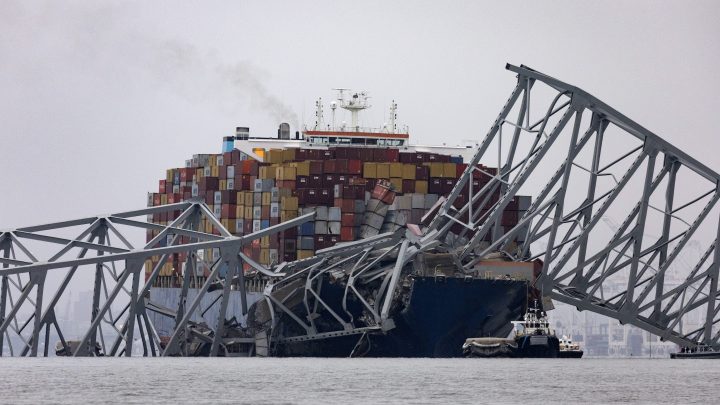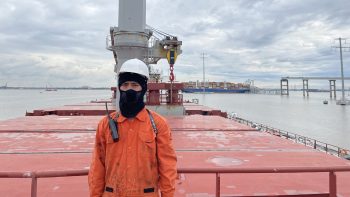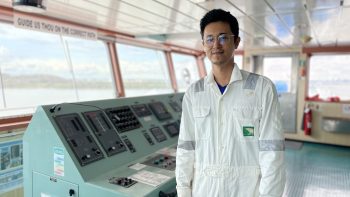
Big cargo ships are more efficient. And more risky.
Big cargo ships are more efficient. And more risky.

There is still a lot we don’t know about Tuesday’s shipping accident in Baltimore that destroyed the Francis Scott Key Bridge. Six people are presumed dead and federal investigators have recovered the black box from the ship that slammed into the structure.
But one thing we do know is that the ship had enough mass and velocity — and therefore momentum — to take down the bridge within a minute of impact. In other words, this is a Very. Big. Vessel.
Back in the 1970s, when the Key bridge was built, container ships were a fraction of the size they are today. That’s because there just wasn’t as much global trade.
Then came globalization. And it took off.
“The more and more trade that was happening, the shipping companies were like, ‘Well, instead of shipping more ships back and forth, how about bigger ships?'” said Susan Golicic, a professor of supply chain management at Colorado State University.
She said companies realized that bigger ships are a lot more efficient. They carry more containers and make better use of their fuel.
“Some of the new ships require fewer people to run the ship. So they’re reducing fuel and labor, which are the big variable costs in transportation,” she said.
In the last 10 years or so, ship sizes have exploded. Now, the largest can handle more than 24,000 containers.
The thing is, when ships get that big, they also get more risky. “Imagine looking for a source of fire in 25,000 containers,” said Capt. Rahul Khanna, global head of marine risk consulting at insurance company Allianz.
He said today’s big ships can’t even dock at a lot of ports. And then, there’s what happens when one of these things … you know … crashes into something.
Just a couple of weeks ago, a container ship at a port in Turkey slammed into three cranes and destroyed them.
“Such incidents have been happening in the last few years, and as insurers, we are obviously concerned because the cost of these incidents have become quite high,” Khanna said.
American ports have been spending a lot of money on upgrades to handle bigger ships. A few years ago, the Bipartisan Infrastructure Law set aside $17 billion for port repairs and expansion.
Even so, Thomas Goldsby at the University of Tennessee said U.S. ports still have a lot of work to do.
“You now need to have canals that are deep enough to accommodate these vessels coming alongside the port. You need to have the cranes to accommodate,” he said.
On the other hand, Goldsby said global trade has been slowing down. So we might see shipping companies embrace smaller ships again.
There’s a lot happening in the world. Through it all, Marketplace is here for you.
You rely on Marketplace to break down the world’s events and tell you how it affects you in a fact-based, approachable way. We rely on your financial support to keep making that possible.
Your donation today powers the independent journalism that you rely on. For just $5/month, you can help sustain Marketplace so we can keep reporting on the things that matter to you.

















